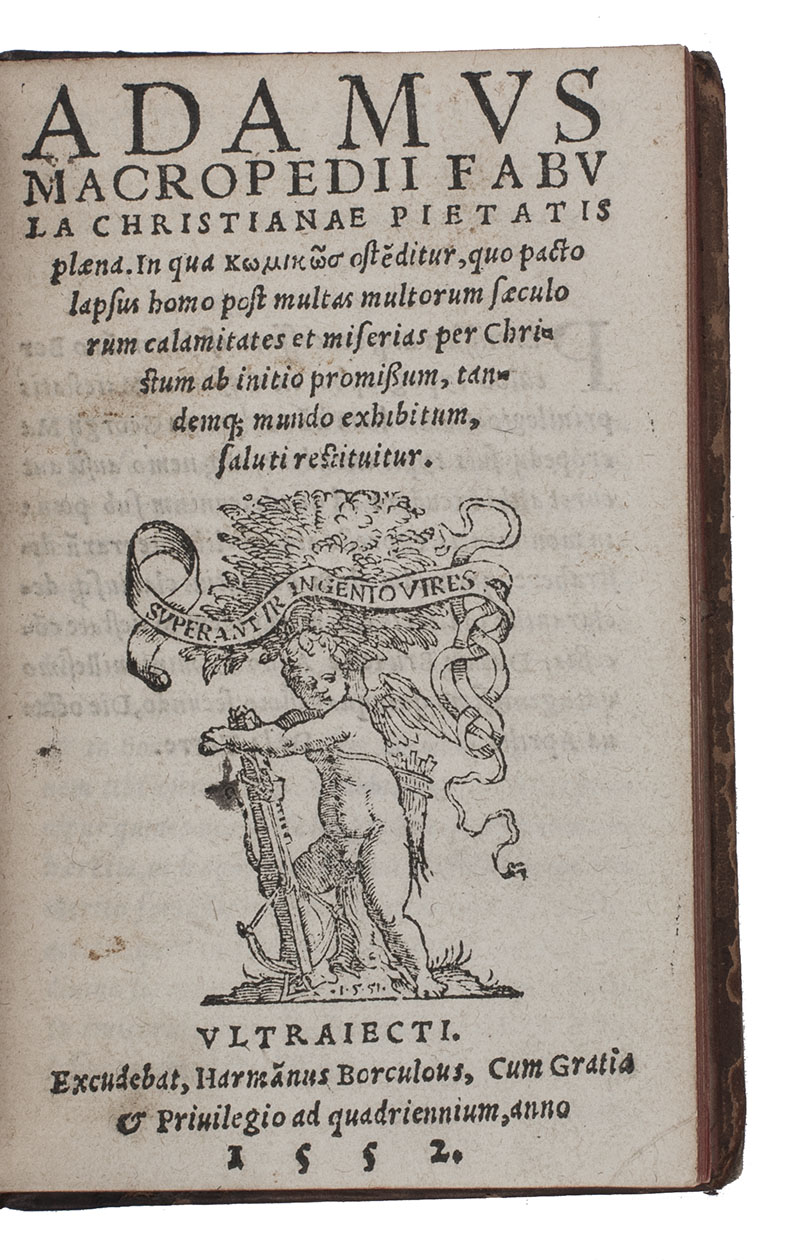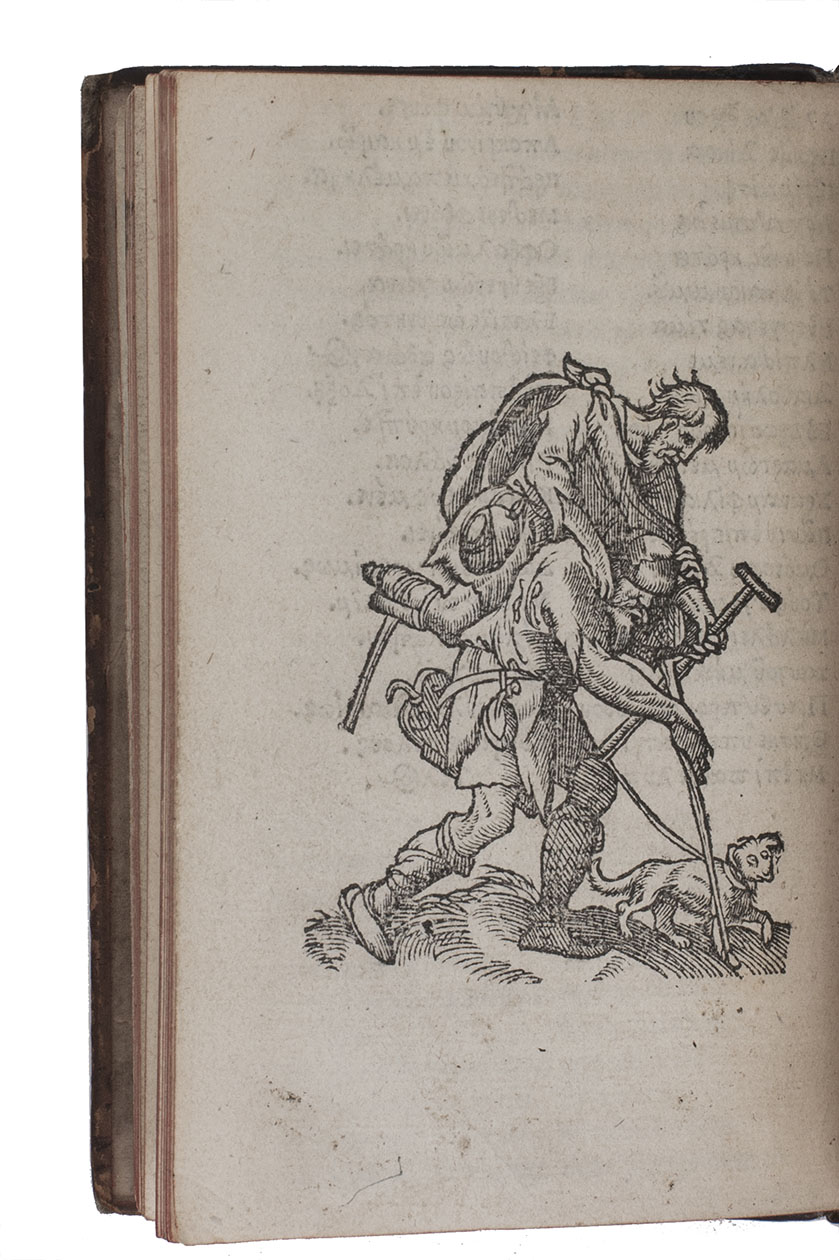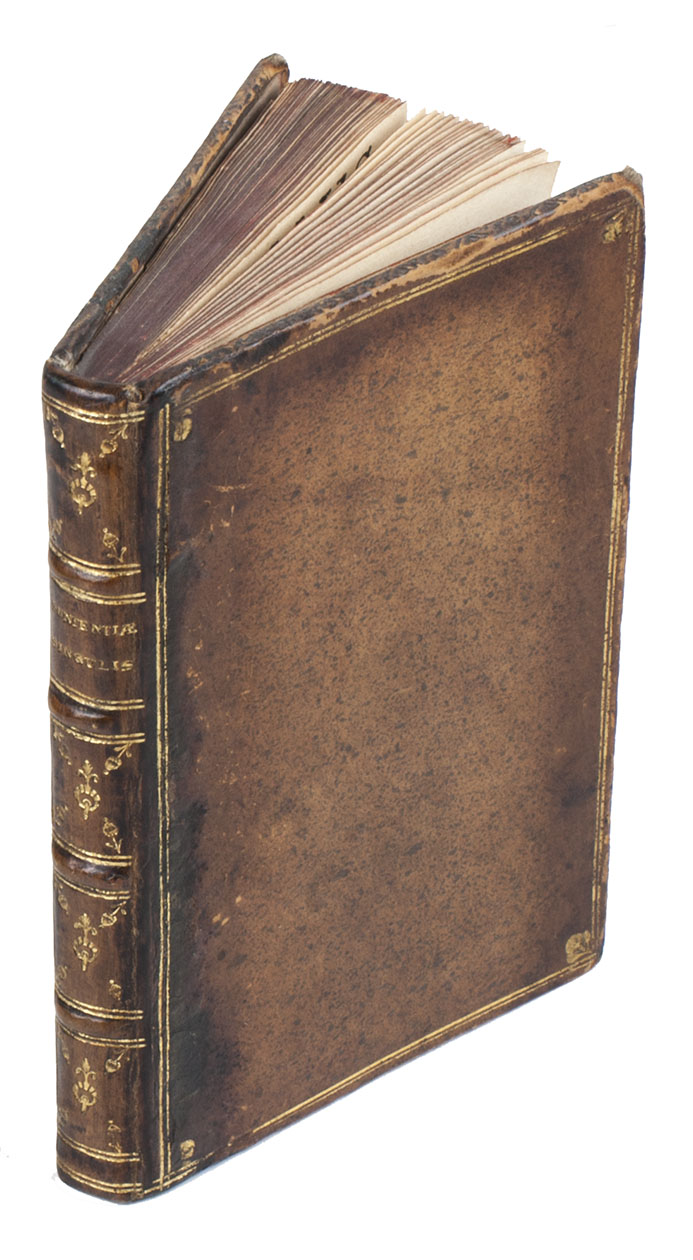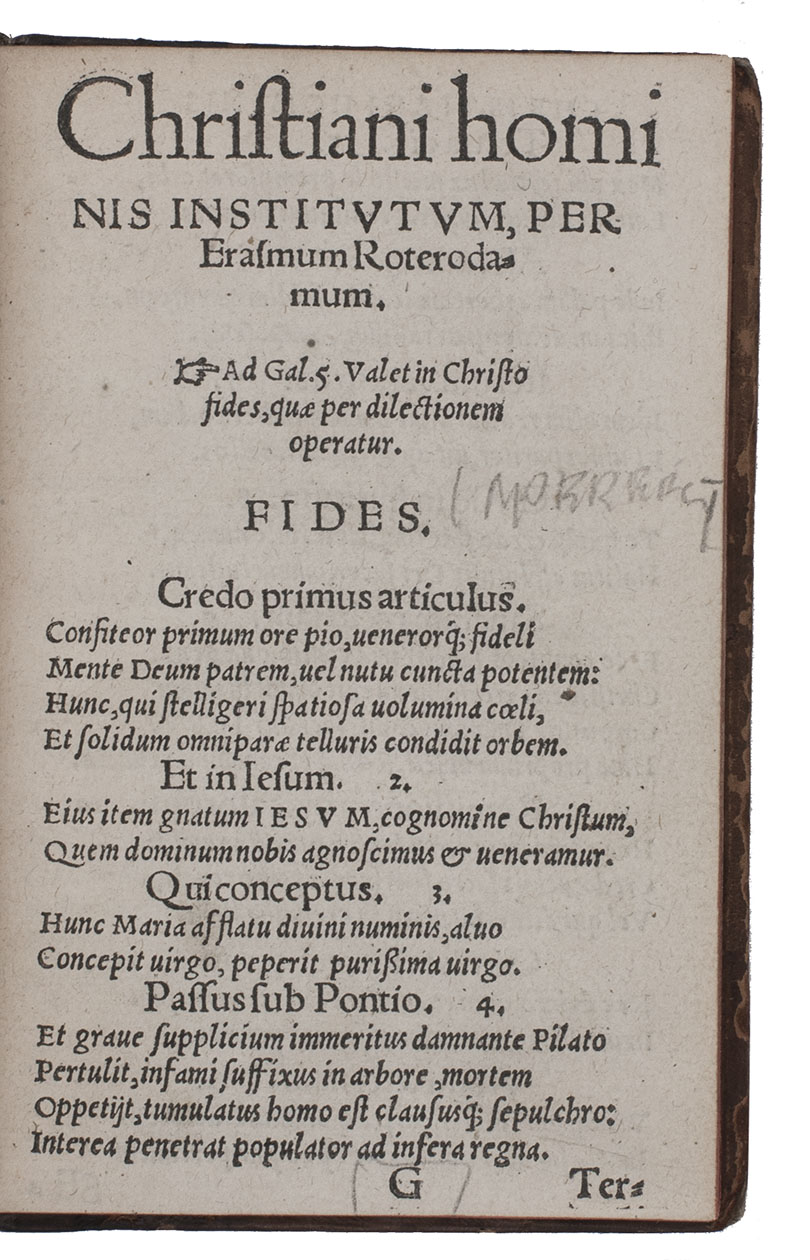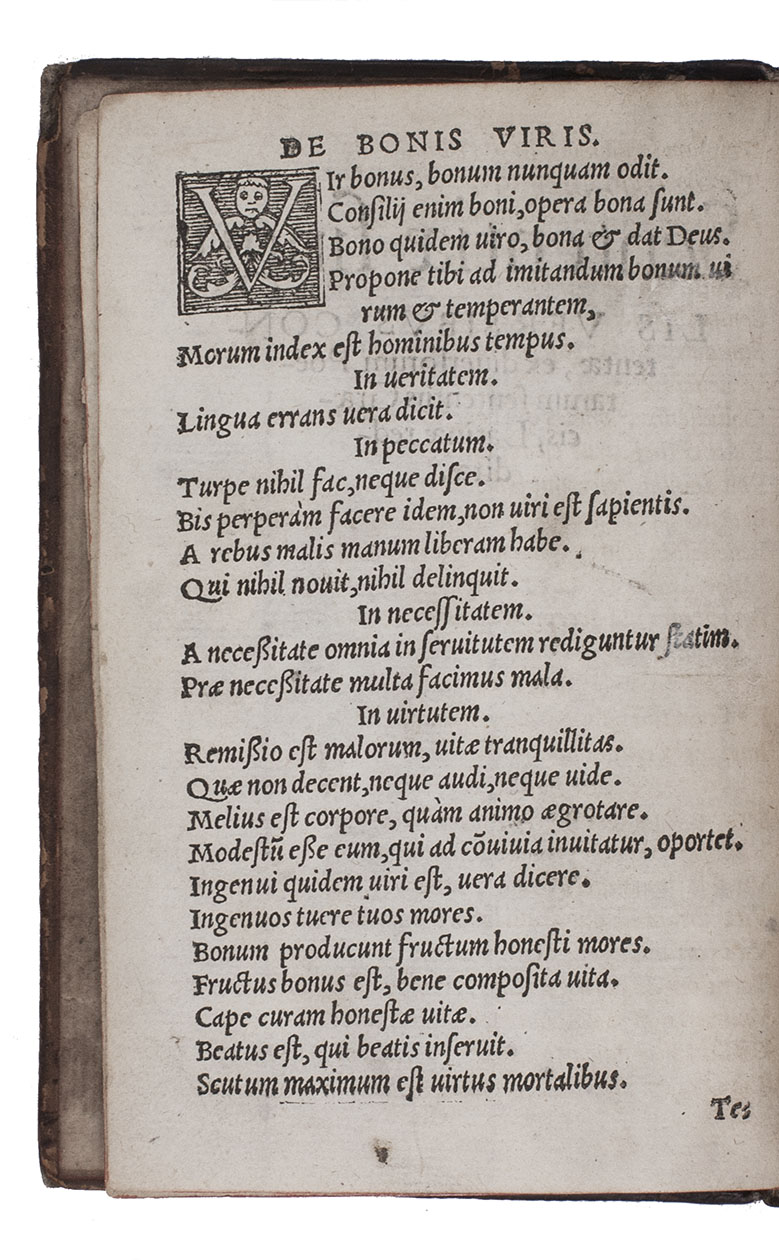MACROPEDIUS, Georgius.
Adamus Macropedii fabula Christianae pietatis plaena. In qua "koozikoos" oste[n]ditur, quo pacto lapsus homo post multas multorum saeculorum calamitates et miserias per Christum ab initio promissum, tandem[ue] mundo exhibitum, saluti restituitur.
Utrecht, Herman van Borculo, 1552. 3 works in 1 volume. Small 8vo (13.5 x 9 cm). With a woodcut publisher's device on the title page, dated 1551 and including cupid with a crossbow, and a large woodcut device on the last page, showing Saint Christopher carrying a man with a wooden leg on his back and holding a small dog on a leash. All three works are set in Aldine-style italic types, the Erasmus also with a long passage in Greek. With:
(2) Sententiae singulis versibus contentae, ex diversorum poëtarum sententiis Graecis, Latinae redditae.
(Colophon:) Antwerp, Johannes Loeus, 1544.
(3) ERASMUS, Desiderius. [Drop title:] Christiani hominis institutum.
Including: ISOCRATES. [Drop title:] Ad demonicum paraenesis.
[Antwerp, Jan Verwithagen?, 1551?].
18th-century gold-tooled calf, with the title lettered in gold on the spine, a double fillet border on both boards with small gold-tooled ornaments at the four corners, red edges. [68]; [12]; [12] ll.
€ 4,500
Ad 1: Very rare first edition of Macropedius's Adamus, a popular school drama on the history of mankind since the fall of man until the birth of Jesus. Macropedius's comedies and tragedies, inspired by the plays of Plautus and Terence, are outstanding specimens of Renaissance Latin school drama. These school dramas had an instructive function in humanistic education as well as the added advantage of familiarizing the pupils with Latin metrics and language through their participation in the performance.
Ad 2: Unrecorded third or fourth (?) edition of a very popular collection of proverbs and sayings from Greek poets translated in Latin.
Ad 3: Erasmus's catechetical poem Institutum hominis Christiani, (G1-4), Isocrates's Paraenesis ad Demonicum (G5v-H3v) with a preface by Erasmus referring to Agricola (G4v-5), and the Greek Dicta Periandri, explained by Erasmus (H3v-4), followed by the publisher's device (H4v). These are complete works extracted from an edition that included others before them. The large woodcut publisher's device resembles those used by Jan Verwithagen in Antwerp (active 1549-1587), noted in Vandeweghe, but without his monogram.
With the bookplate on pastedown. Binding restored, with slightly rubbed edges and the endpapers a bit soiled. Otherwise in very good condition. Ad 1: STCN (2 copies); Typ. Batava 3285; USTC (4 copies, incl. same 2 copies); cf. Bibl. Belg. IV, p. 12; ad 2: this edition not in Belg. Typ.; Bibl. Belg.; USTC; ad 3: cf. USTC 442215; for the publisher's device: cf. Vandeweghe, p. 238.
Related Subjects:
